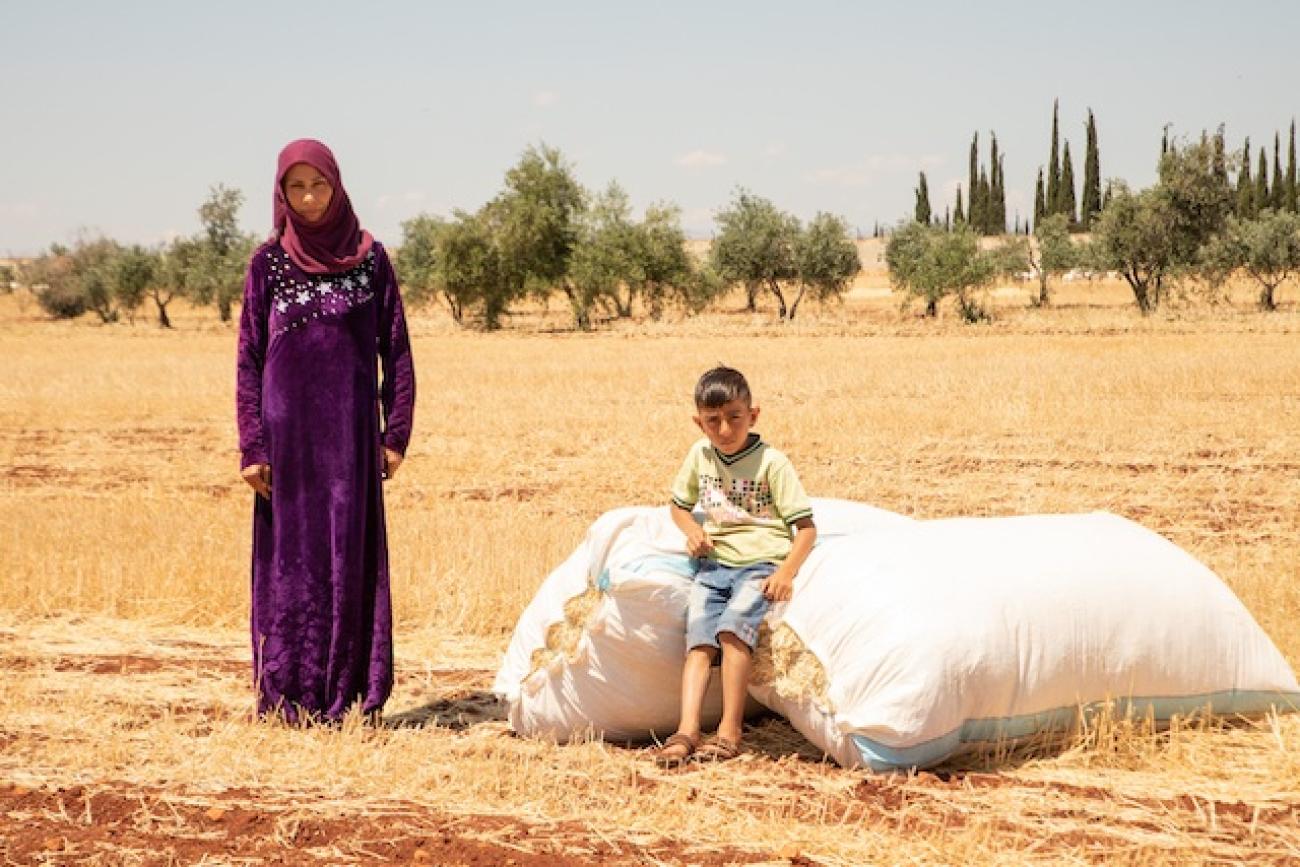Syrian farmers face challenges preparing for the new season following poor harvest in 2020/21

Although the agriculture sector has fared better than other sectors in Syria in the past ten years,
Although the agriculture sector has fared better than other sectors in Syria in the past ten years, farmers have suffered from the impact of conflict and macroeconomic difficulties. Compounding this, in 2021 farmers faced unfavourable weather conditions in the main cereal producing areas of the country.
FAO carried out an independent mission to assess the 2021 cereal harvest and overall situation of the agricultural sector in Syria. Methodologically established crop cutting and statistical sampling methods that had been employed in assessments in previous years could not be utilized this year due to COVID-19 related restrictions. Therefore, production estimates for cereals were determined through key informant interviews involved in a systematic programme in which consensus was developed. Key informants included larger farmers in key producing areas; members of farmers’ cooperatives; the General Union of Peasants; operators of harvesting equipment; and experienced staff from agricultural departments, as well as FAO field personnel. This method, though generally reliable, may have introduced some systematic biases. These methods should be studied further and refined for future use in the event of unforeseen circumstances that prevent the application of established crop assessment methods. Higher early government estimates also suffered from challenges in data collection in areas out of government control.
Socio-economic background: Although much of the country is now secure and pockets of active fighting remain contained, the economic conditions in Syria are not considered favourable. Already weakened by ten years of conflict, the economy suffered further setbacks from the COVID-19 pandemic and spill-over effects from the economic crisis in Lebanon, long a lifeline of the Syrian economy. High inflation rates, weakening currency and shortages of basic products, including fuel, prevail. The impact of sanctions has generally worsened matters for millions of Syrians, directly or indirectly. According to the World Food Programme, more than 12.4 million people (60 percent of the population) were food insecure in 2020, 5.4 million more than in 2019. This has worsened further in 2021.
Crop production: Insufficient and poorly distributed rainfall in the 2020/21 agricultural season, together with several heatwaves, the high cost of inputs, limited availability of irrigation water and high cost of fuel for pumping, resulted in a contraction of the harvestable cereal area. The estimated harvested wheat area (787 000 ha) was slightly over half of that harvested in 2019. The estimated harvested barley area (352 000 ha) decreased by 75 percent from last year because large swathes of land were not deemed worth the harvesting effort. The 2021 wheat production is estimated at around 1.05 million tonnes, down from 2.8 million in 2020, and only a quarter of the pre-crisis average of 4.1 million tonnes (during the period 2002-2011). At 268 000 tonnes, rainfed barley production was only about 10 percent of exceptional harvests in 2019 and 2020.
Main agricultural constraints for crop production: Farmers continue raising concerns about high production costs and transportation costs as well as lack of quality inputs. The agricultural machinery fleet is ageing, with no significant investment. Some progress has been made on the rehabilitation of irrigation structures, although illegal and uncontrolled drilling for groundwater over the past years is likely to have lowered the ground water table. A significant proportion of previously irrigated lands remain unwatered due to lack of equipment, maintenance or fuel. High rates of wastage were reported in fruit and vegetable production, constrained by low consumer purchasing power, the inability to export, and a shortage of processing factories.
Livestock: Nationally, overall livestock numbers appeared to have stabilized after an initial sharp decline early in the conflict. However, current high feed prices and lack of access to pasture are likely to have resulted in extensive destocking. Prices of live animals already decreased compared to last year, as farmers have sold part of their herd to purchase feed and other inputs for the rest. Prices of dairy products and eggs increased to cover the high feed and fuel costs, but the rate of increase for dairy products and eggs is less than the increases in the cost of production. Although no significant outbreaks of animal diseases were reported (though lumpy skin disease of cattle was a problem earlier), nutritional status of animals is weak, making them generally susceptible to disease.
Future trends: Farmers lack liquidity and access to credit, while prices of inputs are increasing. Prices of subsidised inputs, such as fuel and fertilisers increased. Seed is likely to be difficult to source due to the drastically reduced 2020 harvest, and seed quality is expected to be poor, with low germination rates. However, famers lacking feasible economic livelihood alternatives continue working their lands, even if in many cases using less intensive production methods and lower amounts of inputs.
In response to the challenges faced by farmers in the 2020/21 season, immediate action is required to support the agriculture sector and prevent further erosion of productive assets. Although past crop assessment missions have advocated for a transition away from emergency and basic livelihood support and to recovery and reconstruction of the agricultural sector, this year emergency support is critical because the upcoming season carries the likelihood of below-normal precipitation in autumn 2021 and a lack widely available quality seed. The goal of emergency support is to ease shortages and improve access to inputs, ensuring sufficient supplies of diesel at official rates for farming operations, and to avert destocking of animals due to high feed costs.
Detailed findings and additional recommendations will be presented in a forthcoming report assessing the 2020/21 crop production in the Syrian Arab Republic.


